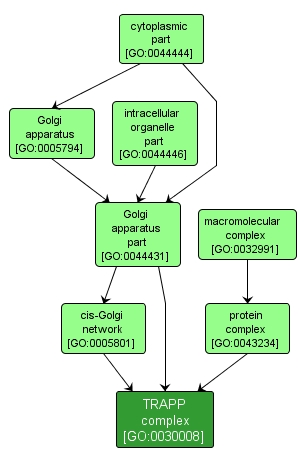GO TERM SUMMARY
|
| Name: |
TRAPP complex |
| Acc: |
GO:0030008 |
| Aspect: |
Cellular Component |
| Desc: |
A large complex present on the cis-Golgi that acts prior to SNARE complex assembly to mediate vesicle docking and fusion. Ras guanyl-nucleotide exchange factor activity has been demonstrated for this complex in S. cerevisiae. |
Synonyms:
- transport protein particle
- TRAPP2
- TRAPP1
|
|

|
INTERACTIVE GO GRAPH
|














